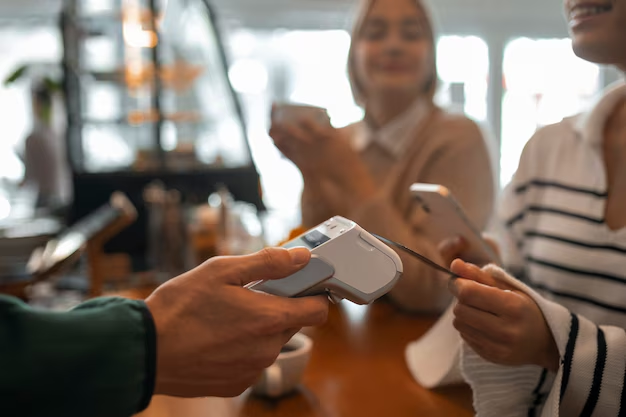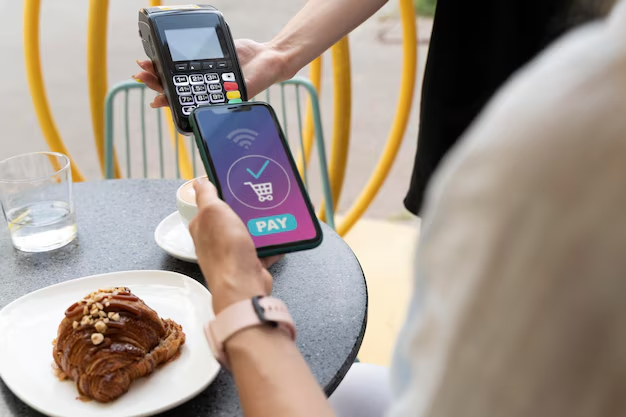In today’s fast-paced digital world, the way we handle financial transactions has evolved significantly. One of the most notable developments in modern payment systems is the rise of contactless payments. This innovative method has reshaped how we use credit cards, providing a seamless, efficient, and secure way to pay for goods and services.
What is Contactless Payment?
Contactless payments are transactions where customers can make payments by simply tapping their credit card, smartphone, or wearable device near a point-of-sale (POS) terminal equipped with Near Field Communication (NFC) technology. This eliminates the need for physical swiping, inserting a card, or entering a PIN for lower-value transactions, making the process quicker and more convenient.
Advantages of Contactless Payments

1. Speed and Convenience
Contactless payments provide a faster and more efficient transaction process. Customers can simply tap their card or device on the POS terminal, reducing wait times and improving the overall shopping experience. This convenience is particularly beneficial in busy environments like retail stores, public transportation, and cafes.
2. Enhanced Security
Contactless payments are designed with security in mind. The technology uses encryption to protect card details, and each transaction generates a unique code, making it difficult for hackers to steal sensitive information. Additionally, contactless payments do not require the user to enter personal details such as a PIN, which minimizes the risk of fraud.
3. Hygiene Benefits
In a world increasingly concerned with hygiene, contactless payments offer a touch-free alternative that reduces physical contact between the customer and the POS terminal. This helps prevent the spread of germs, providing peace of mind to both customers and businesses, especially in the post-pandemic era.
4. Wider Acceptance
As contactless payment adoption has grown, many merchants, from large retailers to small cafes, have adopted the technology. This widespread acceptance has further reinforced the convenience of using contactless methods for everyday purchases.
The Evolution of Credit Cards with Contactless Payments
Modern credit cards have evolved from magnetic stripe cards to chip-enabled cards and now to contactless cards. The integration of NFC technology into credit cards allows users to make quick and secure payments with just a tap. Major credit card networks like Visa, MasterCard, and American Express have made significant strides in promoting contactless payments by collaborating with banks and retailers to ensure broad access to this technology.
How Contactless Payments Work with Smartphones and Wearables
In addition to physical credit cards, contactless payments can also be made through smartphones and wearable devices like smartwatches. Services such as Apple Pay, Google Pay, and Samsung Pay allow users to store their credit card information digitally and use their devices to make payments with the tap of a finger. These digital wallets are growing in popularity as they combine the convenience of contactless payments with the added benefits of mobile integration.
Future of Contactless Payments
As technology continues to advance, the future of contactless payments looks promising. We can expect to see more innovations, such as the integration of biometric authentication (fingerprint or facial recognition) for added security, and an increase in the use of contactless payments in even more sectors, including public transportation and small businesses.
Conclusion
The role of contactless payments in modern credit card usage cannot be overstated. They offer a seamless, secure, and convenient alternative to traditional payment methods. As more consumers and businesses embrace this technology, contactless payments are set to become the standard way of paying in the future. With continued improvements in security and ease of use, contactless payments are likely to dominate the credit card landscape for years to come.
Q. What is the main benefit of contactless payments?
Contactless payments offer increased speed and convenience, allowing customers to complete transactions quickly and without needing to swipe or enter a PIN.
Q. Are contactless payments secure?
Yes, contactless payments are secure due to encryption, one-time transaction codes, and the absence of sensitive information being transmitted during the transaction.
Q. Can I use my smartphone for contactless payments?
Yes, smartphones equipped with mobile payment apps like Google Pay, Apple Pay, or Samsung Pay can be used for contactless payments.
Q. Do all retailers accept contactless payments?
While contactless payments are widely accepted, some smaller businesses or older POS terminals may not yet support this method of payment.
Q. Will contactless payments replace traditional credit card swiping?
It is likely that contactless payments will become the preferred method in many settings, though traditional swiping and inserting cards will still be available for the foreseeable future.

